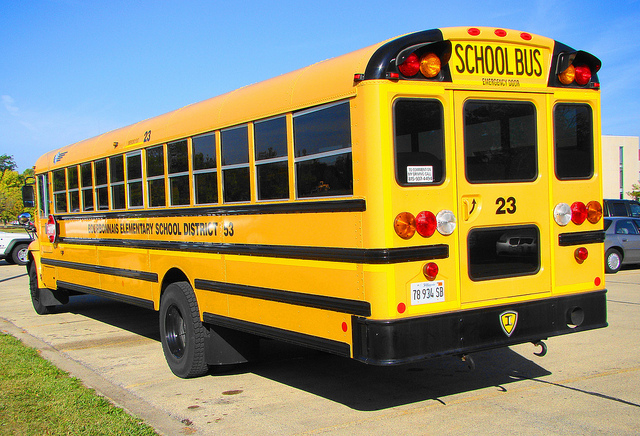Reports Of Sexual Harassment In Illinois Schools Are Suspiciously Low
By Gwendolyn Purdom in News on Jul 15, 2016 5:04PM
A new report from the U.S. Department of Education says 67 percent of Illinois public school districts had exactly zero incidents of sexual harassment or bullying based on gender reported during the 2013-2014 school year. It's a stat the American Association of University Women says doesn't reflect reality, and this month, members of the women's group in Illinois and across the country are encouraging their state governments to address the issue.
"We know that sexual harassment is part of everyday life in middle and high schools," AAUW Illinois President Sallie Miller wrote in a letter to Gov. Bruce Rauner on Wednesday and shared with Chicagoist. "Awareness and action are the only ways we can improve school climate. Thus, it is crucial that officials report accurate data about what goes on at school. On behalf of all Illinois AAUW members, we urge that you review and correct this seemingly erroneous reporting of zero incidents of bullying based on sex and sexual harassment from the 67 percent of LEAs [Local Education Agencies] in Illinois."
While the conversation regarding sexual harassment and assault on college campuses has grown louder in recent years, AAUW's vice president of government relations Lisa Maatz says the issue is too often swept under the rug at the K through 12 level, and the Department of Education's Civil Rights Data Collection (CRDC) report is proof.
"Unfortunately we still hear a lot of 'boys will be boys,' 'the kids need to work it out amongst themselves,' and 'you used to have to have a tougher hide,'" Maatz said. "These really unfortunate kinds of things where because it’s kids they sometimes minimize it when in fact because it’s kids we should make it even more of a priority."
Findings in Illinois matched the national average of districts reporting no incidents. In places like Florida and Arkansas, more than 80 percent of districts reported no incidents—figures AAUW claims defy reports from kids, parents and extensive research. It may seem counterintuitive for the group to be pushing for a higher number of reported incidents, Maatz said, but because they know these incidents are already happening, in this case it's a matter of getting the numbers right.
"They need to have accurate reporting so we can get a true handle on what’s actually happening and develop the programs to address it and then on the back end we’ll start to see the reporting going down again but in an appropriate and accurate way," she said.
AAUW Illinois said they expect a response to their inquiry from the governor's office, though Maatz said it may take some time for administrations to consult with their education specialists. When reached for comment, a U.S. Education Department spokesman said the quality of the CRDC data ultimately "depends on accurate collection and reporting by the participating districts." In Illinois, 930 districts participated.
"The submission system includes a series of embedded edit checks to ensure significant data errors are corrected during the data submission process. OCR also ensures that data quality-checks of submitted data occur, and excludes outlier data when appropriate. Additionally, each district is required to certify the accuracy of its submission," the spokesman said.
With the ongoing budget crisis, the Illinois education system already has plenty on its plate but Maatz and her group say this is an issue that demands attention before it gets worse.
"We know it’s happening in K through 12," Maatz said. "The reality is, we’re kind of sowing these seeds in K through 12 and if we don’t nip this stuff in the bud now, it’s no wonder, unfortunately, that we have the kind of problems we do on college campuses."
